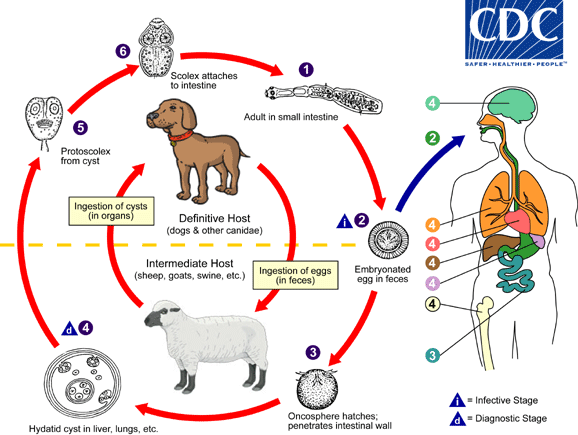Hydatid Disease (Part III)

Above is the life cycle of E. granulosus. Life is fine for all concerned if the pattern follows the red lines, However, if there's the detour to the blue lines--the accidental ingestion of an egg by a human instead of a sheep--then consequences ensue.
Notice that the egg is shed in feces. Dog poop. Since this parasite is transmitted to humans via the all-too-common route of fecal-oral, good hygiene ( in theory) should prevent this. We all know that hand-washing, the most important, most basic element of good hygiene, is far from universal even under the best of circumstances (ubiquitous and well-placed handwashing sinks, availability of clean water, adequate soap and its use thereof). Imagine the odds stacked against this in a place where sheep offal is traditionally left to the dogs--completing the cycle--where cleaning up after one's own dog, not to mention innumerable strays is unheard of, and where there might not even be enough water to flush toilets for humans, if toilets even exist in the locale.
The truth is that there is shit around, all over the place, And the truth is that shit gets ingested, and people get sick (but thankfully, often not). Consider the case of the Orthodox Jewish family in Brooklyn that got infected with cysticercosis (larval stage of the pork tapeworm). No, they weren't sneaking bacon bites, but they had someone doing domestic work who had the tapeworm, and apparently hygiene wasn't, uh, adequate.
NB: One doesn't get cysticercosis ever from eating pork. Like Echinococcus, it's a larval stage, and you get it from being around pork eaters who are infesting your food.


















